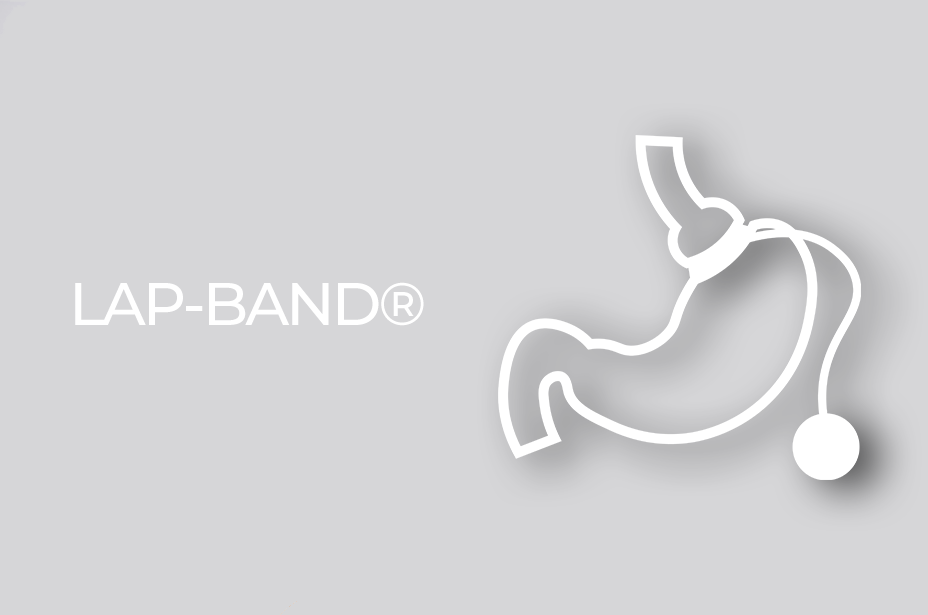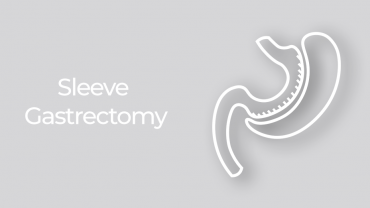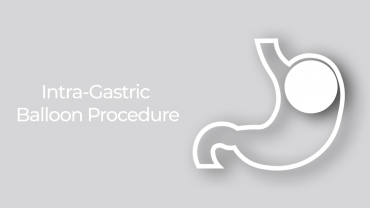There are certain criteria for the LAP-BAND® System surgery. Find out if you meet the physical criteria, calculate your Body Mass Index (BMI).
The LAP-BAND AP® System uses patented Omniform™ Technology—soft, precurved, individual sections—and introduces a 360 degree inflation area.
Omniform™ technology is designed to minimize the potential for leaks due to unwanted creases or folds (crease-fold failure). At the same time, the 360 degree inflation area evenly distributes pressure for complete coverage of stomach anatomy. The LAP-BAND AP® System also has the highest available fill volume so your surgeon has the flexibility to offer more precise adjustments.
The LAP-BAND AP® System was designed to extend the proven performance of the LAP-BAND® System.
Minimally Invasive Surgery
– Minimally invasive surgical approach
– No intestinal re-routing, cutting or stapling of the stomach wall or bowel as with gastric bypass
– Often performed on an out-patient basis
– Small incisions and minimal scarring
– Reduced post-surgical pain, shorter hospital stay and recovery time
– Return to work/normal activities typically within a week
Fewer Risks and Side Effects
– Ten times lower short-term mortality rate than gastric bypass
– Low risk of post-surgical nutritional deficiencies associated with gastric bypass
– Reduced risk of hair loss
– No “dumping syndrome” (food passes through the system too fast resulting in severe cramping/digestive disruption) related to dietary intake restrictions
Adjustable
– Allows for personalized steady, healthy rate of weight loss
– No additional surgery for adjustments
– Supports pregnancy by allowing for increased nutritional needs
– Surgical weight loss option specifically designed for long term weight maintenance
Effective Long Term Weight Loss
– More than 350,000 LAP-BAND® System devices distributed worldwide
– #1 selling adjustable gastric band for weight loss worldwide
– Over ten years of medical studies and academic publications follow-up
– Sets the “gold standard” of care for obesity treatment for hundreds of surgeons world-wide
The LAP-BAND® Adjustable Gastric Banding System is a powerful weight loss tool that can support you on the journey towards your life goals by helping you to eat less, yet feel satisfied. The LAP-BAND AP® System, the latest generation LAP-BAND® System, is the most advanced gastric banding system approved by the FDA. Keep in mind that the journey with the LAP-BAND® System is a total lifestyle commitment – a new sensible, nutritious diet, exercise and activity, and the support of your family and friends – including your new LAP-BAND® System family.
How It Works
Find out how LAP-BAND® Adjustable Gastric Banding System can work for you and learn about its LAP-BAND® System advantages compared to other weight loss surgeries.
Is the LAP-BAND® System right for me?
There are certain criteria for the LAP-BAND® System surgery. Find out if you meet the physical criteria, calculate your Body Mass Index (BMI).
The LAP-BAND AP® System uses patented Omniform™ Technology—soft, precurved, individual sections—and introduces a 360 degree inflation area.
Omniform™ technology is designed to minimize the potential for leaks due to unwanted creases or folds (crease-fold failure). At the same time, the 360 degree inflation area evenly distributes pressure for complete coverage of stomach anatomy. The LAP-BAND AP® System also has the highest available fill volume so your surgeon has the flexibility to offer more precise adjustments.
The LAP-BAND AP® System was designed to extend the proven performance of the LAP-BAND® System.
Minimally Invasive Surgery
– Minimally invasive surgical approach
– No intestinal re-routing, cutting or stapling of the stomach wall or bowel as with gastric bypass
– Often performed on an out-patient basis
– Small incisions and minimal scarring
– Reduced post-surgical pain, shorter hospital stay and recovery time
– Return to work/normal activities typically within a week
Fewer Risks and Side Effects
– Ten times lower short-term mortality rate than gastric bypass
– Low risk of post-surgical nutritional deficiencies associated with gastric bypass
– Reduced risk of hair loss
– No “dumping syndrome” (food passes through the system too fast resulting in severe cramping/digestive disruption) related to dietary intake restrictions
Adjustable
– Allows for personalized steady, healthy rate of weight loss
– No additional surgery for adjustments
– Supports pregnancy by allowing for increased nutritional needs
– Surgical weight loss option specifically designed for long term weight maintenance
Effective Long Term Weight Loss
– More than 350,000 LAP-BAND® System devices distributed worldwide
– #1 selling adjustable gastric band for weight loss worldwide
– Over ten years of medical studies and academic publications follow-up
– Sets the “gold standard” of care for obesity treatment for hundreds of surgeons world-wide
Reversible
– While it is intended to be a long-term treatment, the LAP-BAND® System can be removed at any time, in some cases laparoscopically
– Stomach and other anatomy typically return to their original state/functions.
References: Executive Summary: Laparoscopic adjustable gastric banding for the treatment of obesity (Update and Re-appraisal). The Australian – Safety and Efficacy Register of new Interventional Procedures – Surgical (ASERNIPS) 2002; (Laparoscopic adjustable gastric banding surgery like the Lap-Band® surgery, is associated with a mean short-term mortality rate of around 0.05% compared to 0.50% for Gastric Bypass and 0.31% for Vertical Banded Gastroplasty.
Will I be sick frequently after the operation?
The LAP-BAND® System limits food intake. If you feel nauseous or sick on a regular basis, it may mean that you are not chewing your food well enough or that you are not following the diet rules properly. However, it could also mean that there is a problem with the placement of the LAP-BAND® System, so contact your doctor if this problem persists. Vomiting should be avoided as much as possible as it can cause the small stomach pouch to stretch. It can also lead to slippage of part of the stomach through the LAP-BAND® System and reduce the success of the operation. In some cases, it may require another operation.
How long will it take to recover after surgery?
If LAP-BAND® Adjustable Gastric Banding System surgery is performed laparoscopically, patients typically spend less than 24 hours in the hospital. Most patients return to work in about a week, and to exercise in about a month to 6 weeks. In the case of open surgery, or if there are complications, recovery may take longer.
How much weight will I lose?
Weight loss results vary from patient to patient, and the amount of weight you lose depends on several things. The LAP-BAND® System needs to be in the right position, and you need to be committed to your new lifestyle and eating habits. Weight loss surgery is not a miracle cure, and the pounds won’t come off by themselves. It is very important to set achievable weight loss goals from the start. A weight loss of 2 to 3 pounds a week in the first year after the operation is possible, but 1 pound a week is more likely. Twelve to 18 months after the operation, weekly weight loss is usually less. Gradual yet steady weight loss with the LAP-BAND® System can be healthy for you. Losing weight too quickly creates a health risk and can lead to a number of problems. The main goal is to have weight loss that prevents, improves, or resolves health problems connected with severe obesity.
How do the weight loss results with the LAP-BAND® System compare to those with gastric bypass?
Surgeons have reported that gastric bypass patients lose weight faster in the first year. At 3 years, however, many LAP-BAND® Adjustable Gastric Banding System patients have achieved weight loss comparable to that of gastric bypass patients. You should focus on long-term weight loss and remember that it is important to lose weight gradually while reducing obesity-related risks and improving your health.
Does the LAP-BAND® System require frequent visits to my doctor after surgery?
Check-ups with your doctor are a normal and very important part of the LAP-BAND® System follow-up. Many surgeons see their patients weekly or biweekly during the first month and every 4 to 12 weeks for the first year. Adjustments may be performed during some of these visits. It is typical for follow-up visits to be scheduled every 3 to 6 months during the second and third year, depending on the individual case.
Does the LAP-BAND® System limit any physical activity?
The LAP-BAND® Adjustable Gastric Banding System should not hamper physical activity, including aerobics, stretching, and strenuous exercise.
How is the LAP-BAND® System adjusted?
Adjustments are often carried out in the X-ray department. They are done there so the access port can be clearly seen. When X-rays are used, your reproductive organs should be shielded. Sometimes adjustments can be done in an outpatient clinic or office, and local anesthesia may or may not be needed. A fine needle is passed through the skin into the access port to add or subtract saline. This process most often takes only a few minutes and most patients say it is nearly painless.
Do I have to be careful with the access port just underneath my skin?
The access port is placed under the skin in the abdominal wall, and once the incisions have healed, it should not cause discomfort or limit any physical exercise. The only sensation you may experience from the port occurs when you go in for adjustments. If you feel persistent discomfort in the port area, talk to your doctor.
Can other people see that I have a port?
The port is placed under your skin and is generally not noticeable even if that area of your abdomen is exposed.
Can the LAP-BAND® System be removed?
Although the LAP-BAND® Adjustable Gastric Banding System is not meant to be removed, it can be, in some cases laparoscopically. Surgeons report that the stomach generally returns to its original shape once the LAP-BAND® System is removed. After the removal, though, you may gain more weight.
Will I need plastic surgery for the surplus skin when I have lost a lot of weight?
That is not always the case. As a rule, plastic surgery will not be considered for at least a year or two after the operation since the skin will sometimes mold itself around the new body tissue. Give the skin the time it needs to adjust before you decide to have more surgery. If you do decide after that time you would like to get plastic surgery to remove the excess skin, WLS4 BetterLife offers that service, as well, with the world class experience you’ve come to expect from us.
This is a fairly common feeling, especially for people with a LAP-BAND® Adjustable Gastric Banding System that is too tight or just after an adjustment. During the day, the water content in the body changes and this may cause the LAP-BAND® System to feel “tighter” some of the time. Some women have also noticed that the LAP-BAND® System feels tighter during menstruation.
Will I feel hungry or deprived with the LAP-BAND® System?
The LAP-BAND® System helps you eat less and feel full in two ways-first by reducing the capacity of your stomach, and second, by increasing the time it takes food to get through the digestive system. After a small meal, the amount of which varies from person to person, you should feel full. If you follow the nutrition guidelines when you choose your food and then chew it well, you should not feel hungry or deprived. Remember that the LAP-BAND® Adjustable Gastric Banding System is a tool to help you change your eating habits.
What will happen if I become ill?
One of the major advantages of the LAP-BAND® System is that it can be adjusted. If your illness requires you to eat more, the LAP-BAND® System can be loosened by removing saline from it. When you have recovered from your illness and want to lose weight again, the LAP-BAND® System can be tightened by increasing the amount of saline. If the LAP-BAND® Adjustable Gastric Banding System cannot be loosened enough, it may have to be removed.
What are the effects if I get pregnant?
Becoming pregnant can be easier as you lose weight. Your menstrual cycle may become more regular. If you need to eat more while you are pregnant, the LAP-BAND® System can be loosened. After pregnancy, the LAP-BAND® System may be made tighter again and you can resume losing weight.
Will I need to take vitamin supplements?
You may. It’s possible to not get enough vitamins from three small meals a day. At your regular check-ups, your specialist will evaluate whether you are getting enough vitamin B12, folic acid, and iron. Your surgeon may advise you to take supplements.
What about other medications?
You should be able to take prescribed medication, though you may need to use capsules. Break big tablets in half or dissolve them in water, so they do not get stuck in the stoma and make you sick. Always ask the doctor who prescribes the drugs about this. Your surgeon may tell you to avoid taking aspirin and other non-steroidal anti-inflammatory pain relievers because they may irritate the stomach. The problems these drugs may cause could result in LAP-BAND® System removal.
What if I go out to eat?
Order only a small amount of food, such as an appetizer. Eat slowly. Finish at the same time as your table companions. You might want to let your host or hostess know in advance that you cannot eat very much.
What about alcohol?
Alcohol has a high number of calories and breaks down vitamins. An occasional glass of wine or other alcoholic beverage, though, is not considered harmful to weight loss.
Can I eat anything in moderation?
After your stomach has healed, you may eat most foods that don’t cause you discomfort. However, because you can only eat a little, it is important to include foods full of important vitamins and nutrients, such as those recommended in the nutrition section of this booklet and as advised by your surgeon and/or dietitian. If you eat foods that contain lots of sugar and fat or drink liquids full of “empty” calories, such as milkshakes, the effect of the LAP-BAND® Adjustable Gastric Banding System may be greatly reduced or even cancelled.
Will I suffer from constipation?
There may be some reduction in the volume of your stools, which is normal after a decrease in food intake, because you eat less fiber. This should not cause you severe problems. If difficulties do arise, check with your doctor. He or she may suggest you take a mild laxative and drink plenty of water for a while. Your needs will vary, but you should drink at least 6 to 8 glasses of water a day.





